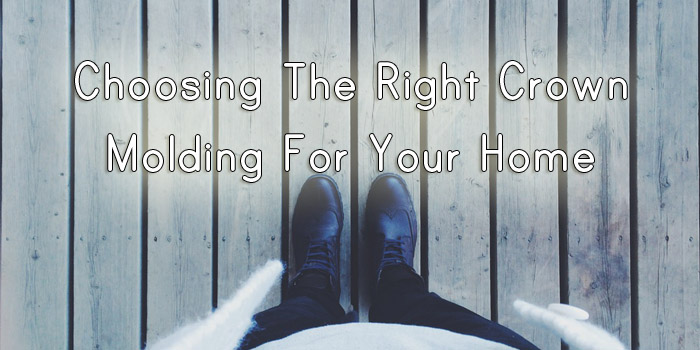Choosing The Right Crown Molding For Your Home
Whenever you hear the term “crown molding,” that simply refers to any type of molding that is applied to the finished edge of a wall. By adding crown molding to your home, you’re heightening the aesthetic appeal because it creates an elegant and graceful shape. When you heighten the aesthetic appeal, you’re increasing the value of your home should you choose to sell down the line. It’s a decorative transitioning point that can be seen in…
- Cabinets
- Cornices
- Walls
- Pilasters
Crown molding creates length while unifying the room’s space, however choosing the right molding for your home can be a daunting task if you’re ill-experienced. When choosing the right crown molding for your home, there a few things you need to consider:
- Budget
- Materials
- Professional install or DIY (do-it-yourself)
- Size (room and length of walls)
Now with that being said, even if you’re having it professionally installed, you should be armed with a little bit of knowledge in terms of the different materials you can choose from because although some material may be offered, they may not be right for your home.
The options for crown molding include wood, fiberboard, and plaster
Different Types of Crown Molding
If you’re ever asked what “type” of crown molding you’d like, that’s referring to the material you have in mind. While the most common type of crown molding is wood, there are a few other options that may suit your needs better.
- As aforementioned, wood is the most popular material used when installing crown molding. At Alliance Woodworking, we’ve crafted some beautiful crown molding from high quality wood that truly brought a new level of elegance to each home. There are a few different types of wood that you can choose from which includes pine, mahogany, and oak. The only negative thing about choosing wood for your crown molding is that it’s sensitive to temperature changes and humidity, so there’s the risk that the wood will expand, shrink, or even crack.
- This type of crown molding is another popular material to choose as it will not warp like wood will, so regardless of the humidity, the molding will remain intact. Polyurethane is scratch resistance and it also doesn’t attract insects and termites. The only negative aspect with this material is that it will dent easily.
- MDF (Medium Density Fiberboard). Composed of resin and fibers from sawdust, MDF molding is a more affordable alternative to wood. However, since it’s composed of sawdust, it’s susceptible to shrinking, expanding, as well as cracking if you have fluctuating humidity levels in your home or office.
- Should you choose plaster for your crown molding, it needs to be installed by a professional as its custom made. One cool thing about plastic crown molding is that you can give it a truly unique profile. Although it can be more expensive, it’s extremely durable and will always maintain its original form since it’s not affected by humidity or temperature fluctuations.
Tags: Crown Molding, fiberboard, mdf, wood


